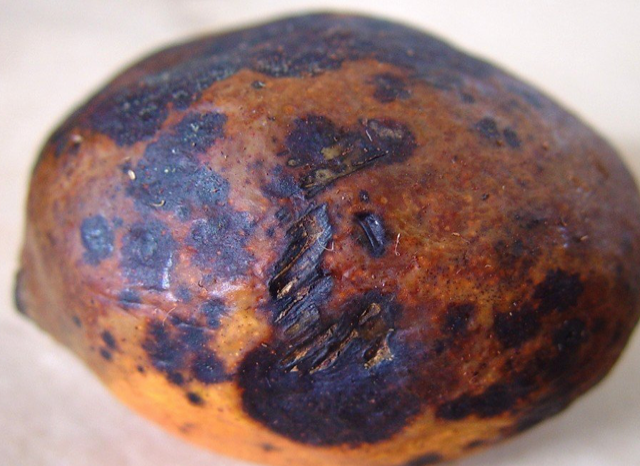Anthracnose (Colletotrichum gloeosporiodes)
Credit: Biovision-Infonet

(c) A.A. Seif & A.M. Varela, icipe
(Colletotrichum gloeosporioides). Anthracnose initially appears as small black spots. On leaves, the spots can grow to form an irregular patch. On young fruit, pin-sized, brown or black, sunken spots develop.

(c) A.A. Seif
The most serious and widespread fungus is anthracnose. Anthracnose initially appears as small black spots. On leaves, the spots can grow to form an irregular patch. On young fruit, pin-sized, brown or black, sunken spots develop. Sometimes, a “tear stain” pattern develops on fruit. It is an important problem after harvesting the fruit, especially during transport and storage, where fruit can develop round, blackish sunken spots. The fungus is spread by rain splash and survives from season to season on dead leaves and twigs. Rainy weather during blooming and early fruit set will favour the development of anthracnose.What to do:
- Use tolerant varieties. “Tommy Atkins” is less susceptible to anthracnose than “Haden”, “Sensation” and “Zill”.
- Cut-out dead branches and twigs and dead leaves. Completely remove them from the mango orchard.
- Monitor for the disease weekly.